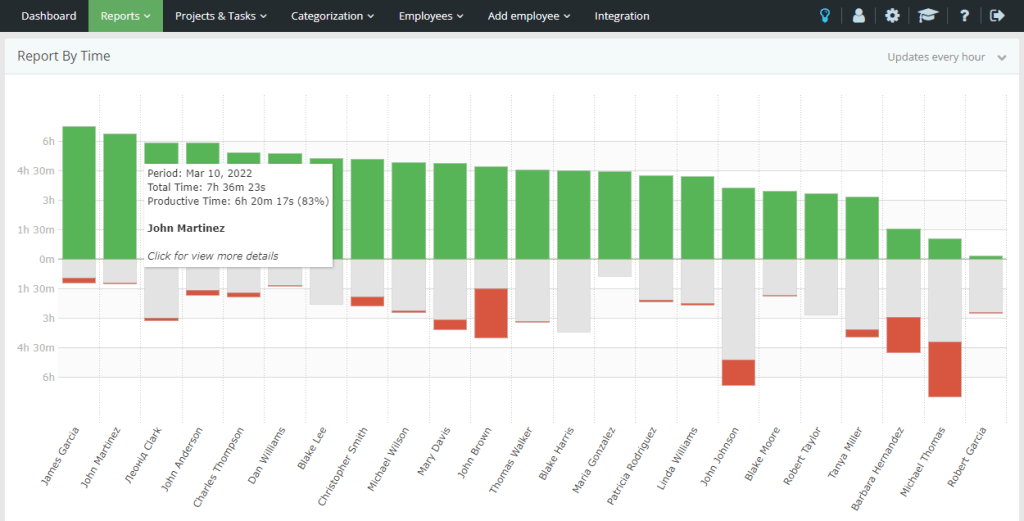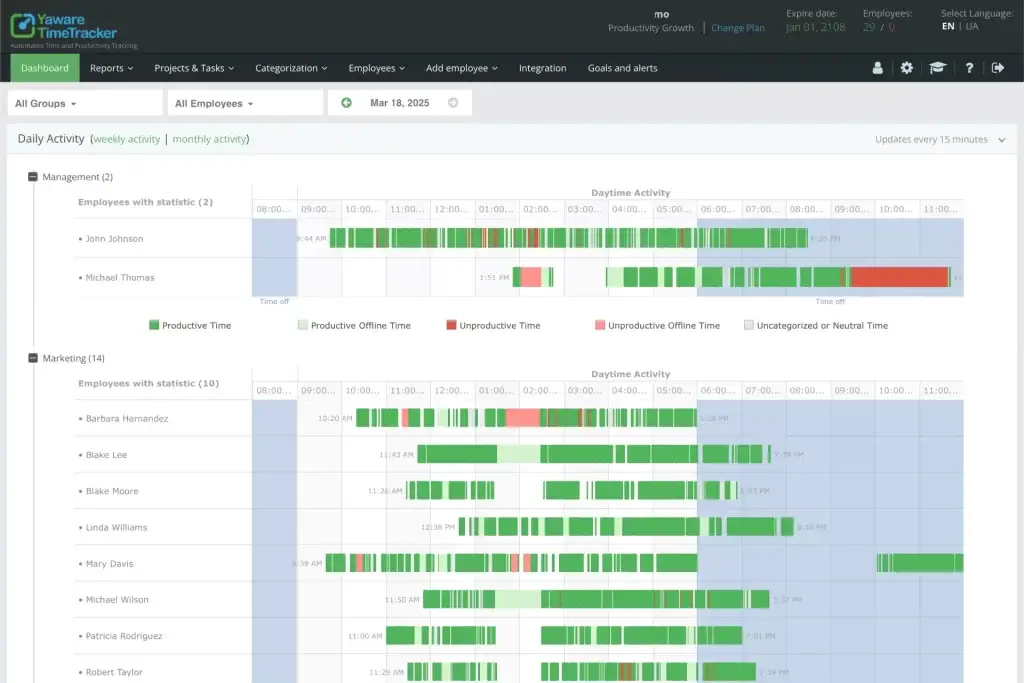Many teams resist time tracking because they associate it with surveillance, micromanagement, and broken trust. However, the problem isn't time tracking itself-it's how organizations implement it. Respectful time tracking can strengthen team relationships, improve productivity insights, and support employee autonomy when designed with trust and transparency as core principles.
Why time tracking often feels like surveillance
Traditional time tracking systems focused on catching problems rather than supporting performance. Early workplace monitoring tools captured screenshots, logged keystrokes, and recorded detailed computer activity. These approaches created anxiety and resentment among team members who felt constantly watched.
The emotional response is predictable: fear leads to resistance, resistance creates conflict, and conflict damages productivity. Teams spend energy avoiding or gaming surveillance systems instead of focusing on meaningful work.
The surveillance mindset problem
Surveillance-based tracking assumes employees will slack off without constant oversight. This assumption creates toxic dynamics where managers become watchers and employees become suspects. Trust erodes quickly in these environments.
However, not all time trackers operate this way. The difference lies in implementation approach, feature design, and organizational culture around the tool.
What makes time tracking respectful and trust-based
Ethical time tracking operates on partnership principles rather than surveillance assumptions. Teams understand why tracking exists, how data gets used, and what benefits it provides. Transparency replaces secrecy, and collaboration replaces control.

Trust-based tracking emphasizes employee autonomy by avoiding invasive monitoring techniques. Instead of capturing detailed activity, these systems focus on patterns that help teams optimize their work environment and processes.
Building trust through transparency
Successful implementations start with clear communication about tracking purposes. Teams need to understand business reasons for data collection, how information supports their productivity, and what specific insights management hopes to gain.
Five criteria for respectful time tracking:
- Clear purpose explanation – Teams understand exactly why tracking exists and how it benefits their work
- Employee data access – Team members can view their own tracking data through transparent dashboards
- No invasive monitoring – Systems avoid screenshots, keystroke logging, or detailed computer activity capture
- Collaborative implementation – Teams participate in selecting tracking tools and setting usage policies
- Focus on patterns, not individuals – Analytics emphasize team trends rather than individual performance evaluation
This approach works better than control-based systems because it aligns tracking with team interests rather than opposing them.
What happens when teams help shape the tracking process
Organizations that involve employees in tracking decisions see dramatically different adoption outcomes. When teams participate in tool selection, policy creation, and usage guidelines, resistance decreases and engagement increases significantly.

Real implementation examples
Some companies hold team meetings to discuss tracking needs before selecting tools. They ask questions like: What productivity challenges do we face? What insights would help us work better? What monitoring approaches make us uncomfortable?
This consultation process shifts focus from “monitoring employees” to “gathering insights for better working conditions.” Teams feel heard rather than watched, creating psychological safety around productivity measurement.
Reducing anxiety through participation
Employee involvement reduces tracking anxiety because teams understand the decision-making process. When people help create policies, they're more likely to support implementation and less likely to view tracking as imposed surveillance.
Participation also improves tracking quality because employees provide insights about work patterns that managers might miss. This collaborative approach generates better data and stronger team relationships.
What features make a time tracker ethical by design
Trust-based employee monitoring requires specific technical features that protect privacy while providing useful insights. Ethical tracking tools avoid invasive technologies that damage team relationships and focus on supportive analytics instead.
Privacy-protective design elements
Ethical trackers emphasize work pattern analysis rather than detailed activity surveillance. They provide team-level insights without exposing individual behaviors that could create embarrassment or anxiety.
AI time tracker for teams capabilities can identify productivity trends without naming specific individuals or capturing sensitive information. This approach supports team optimization while maintaining personal privacy.
Five features that maintain trust in workplace tracking:
- Pattern-based analytics – Focus on team trends rather than individual activity details
- Employee dashboard access – Team members control their data visibility and understand collection purposes
- No screen capture – Avoid invasive visual monitoring that creates surveillance anxiety
- Transparent data usage – Clear communication about how tracking information supports team goals
- Configurable privacy settings – Allow teams to adjust tracking scope based on comfort levels
These features create what HR professionals call an “invisible ally”-tracking that helps without hindering, supports without surveillance.
How Yaware.TimeTracker fits into high-trust cultures
Yaware.TimeTracker demonstrates non-invasive time tracking software through architectural choices that prioritize team trust and employee autonomy. The platform avoids surveillance features that damage workplace relationships.

Trust-building technical approach
AI-powered analytics identify productivity patterns without invasive individual monitoring. Advanced algorithms provide team insights while protecting personal privacy and maintaining professional dignity.
Employee access ensures transparency through individual dashboards where team members understand exactly what data gets collected and how it supports productivity goals.
No hidden surveillance functions
The platform includes no screenshot capture, keystroke logging, or detailed computer activity monitoring. These design decisions reflect ethical principles that prioritize employee trust over comprehensive data collection.
Transparent employee monitoring means team members know what's tracked, why it's useful, and how it benefits their work environment rather than threatening their autonomy.
Yaware.TimeTracker was built specifically for team-first productivity tools that strengthen rather than strain workplace relationships through respectful data collection and transparent usage policies.
Final reflection for HR and team leads
Time tracking isn't about numbers-it's about clarity. Teams perform better when they understand their work patterns, identify optimization opportunities, and receive support for productivity challenges.
High-trust teams accomplish more when they have data instead of suspicions, insights instead of assumptions, and transparency instead of secrecy. Respectful tracking provides the foundation for these positive dynamics.
The goal isn't perfect monitoring-it's useful insights that help teams work more effectively while maintaining the trust and autonomy that drive long-term success.
Want to see what respectful tracking actually looks like? Explore a real Yaware.TimeTracker dashboard – built for clarity, not control.

